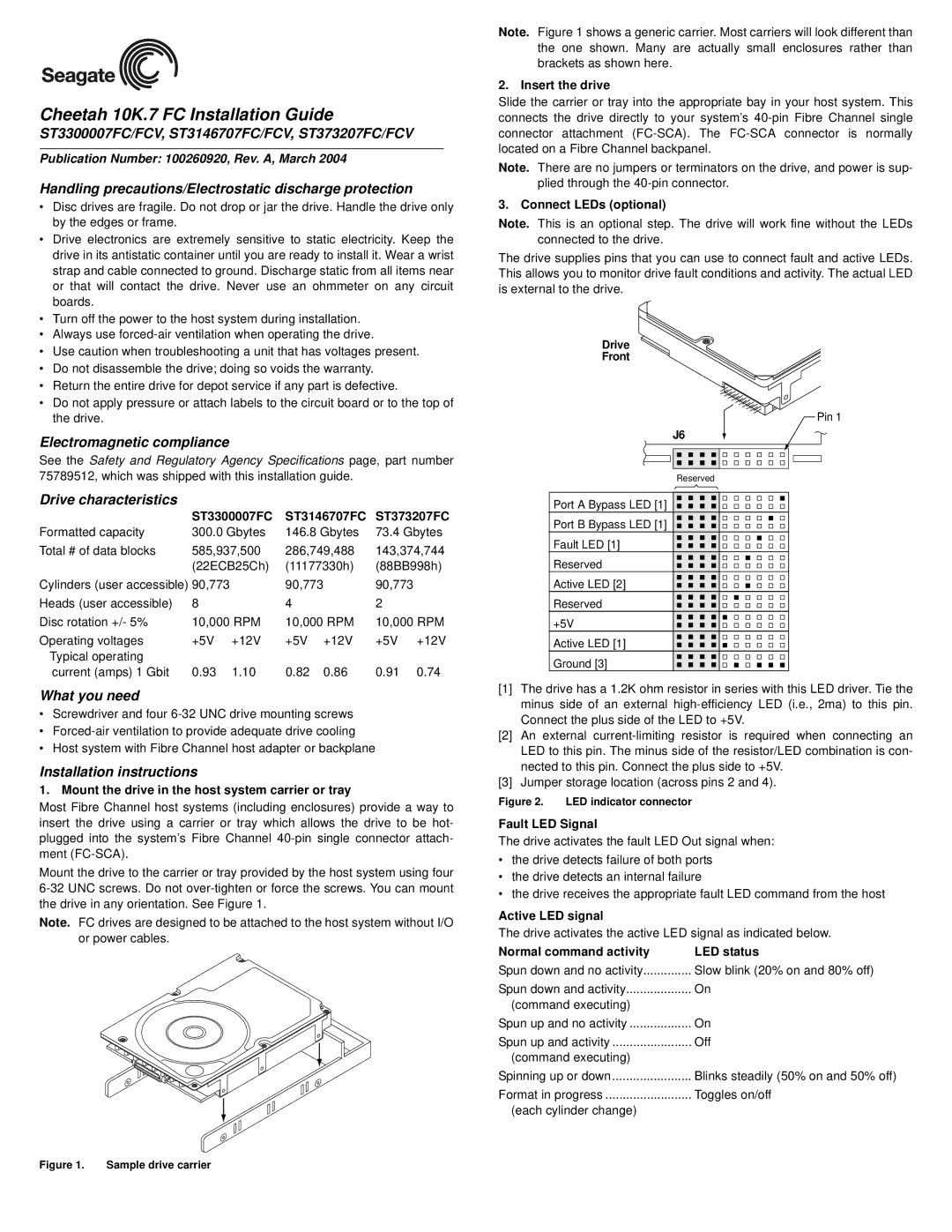ST3146707FC/FCV, ST3300007FC/FCV, ST373207FC/FCV specifications
Seagate's ST3300007FC/FCV, ST3146707FC/FCV, and ST373207FC/FCV are a series of high-performance hard disk drives designed primarily for enterprise environments. Renowned for their reliability and speed, these models are optimized for data-intensive applications, making them suitable for server storage, data warehouses, and high-capacity backup solutions.The ST3300007FC/FCV model offers a capacity of 3TB, providing ample room for large datasets. It utilizes a 7200 RPM spindle speed, which facilitates quick data access and an enhanced user experience. One of the standout features is its support for Serial Attached SCSI (SAS) interface, enabling high transfer rates and increased reliability compared to traditional SATA drives. This release also employs Seagate's Thermal Fly Height Compensation technology, which improves performance and reduces the risk of data loss due to thermal expansion.
Similarly, the ST3146707FC/FCV is tailored for enterprise applications, offering 1.4TB of storage. Its advanced error correction capabilities ensure data integrity over extended usage periods. This model, like others in this line, incorporates PowerBalance technology, which allows for energy-efficient operation under various workloads without sacrificing performance. With a mean time between failures (MTBF) rated at 1.4 million hours, businesses can rely on these drives for their mission-critical applications.
The ST373207FC/FCV model boasts a 7200 RPM spindle speed as well, but with a capacity of 732GB. This smaller yet efficient drive is designed for tasks requiring faster response times, such as database transactions and caching. The dual port functionality of the SAS interface enhances redundancy and failover capabilities, providing uninterrupted operational efficiency.
Each model's implementation of Seagate's Enhanced Error Correction Code (ECC) not only boosts data reliability but also minimizes downtime, which is critical in enterprise settings. The drives are also designed with vibration tolerance in mind, making them ideal for use in multi-drive environments, where physical space can lead to interference.
All three of these Seagate drives embody a commitment to performance, reliability, and data integrity. They are engineered for demanding environments, offering the scalability that organizations require to handle growing data needs. Overall, the ST3300007FC/FCV, ST3146707FC/FCV, and ST373207FC/FCV stand out as robust options for enterprises aiming to enhance their data storage solutions.

